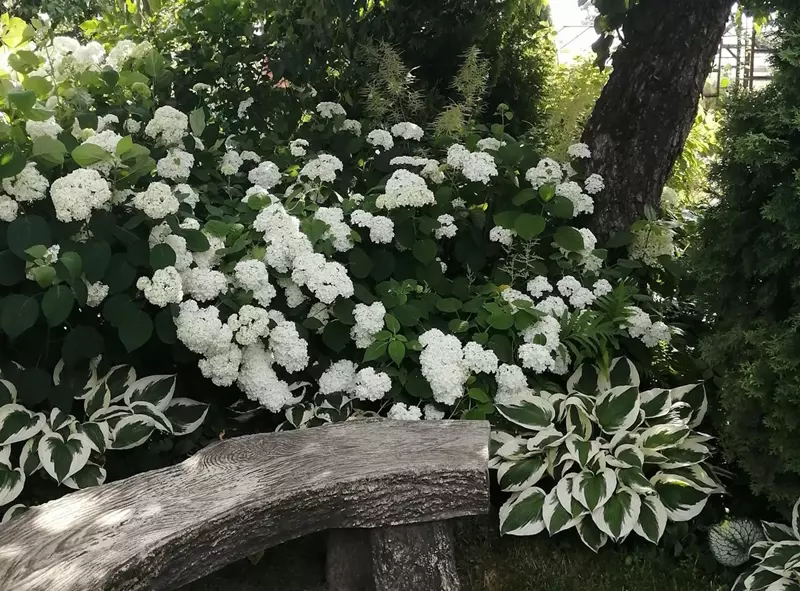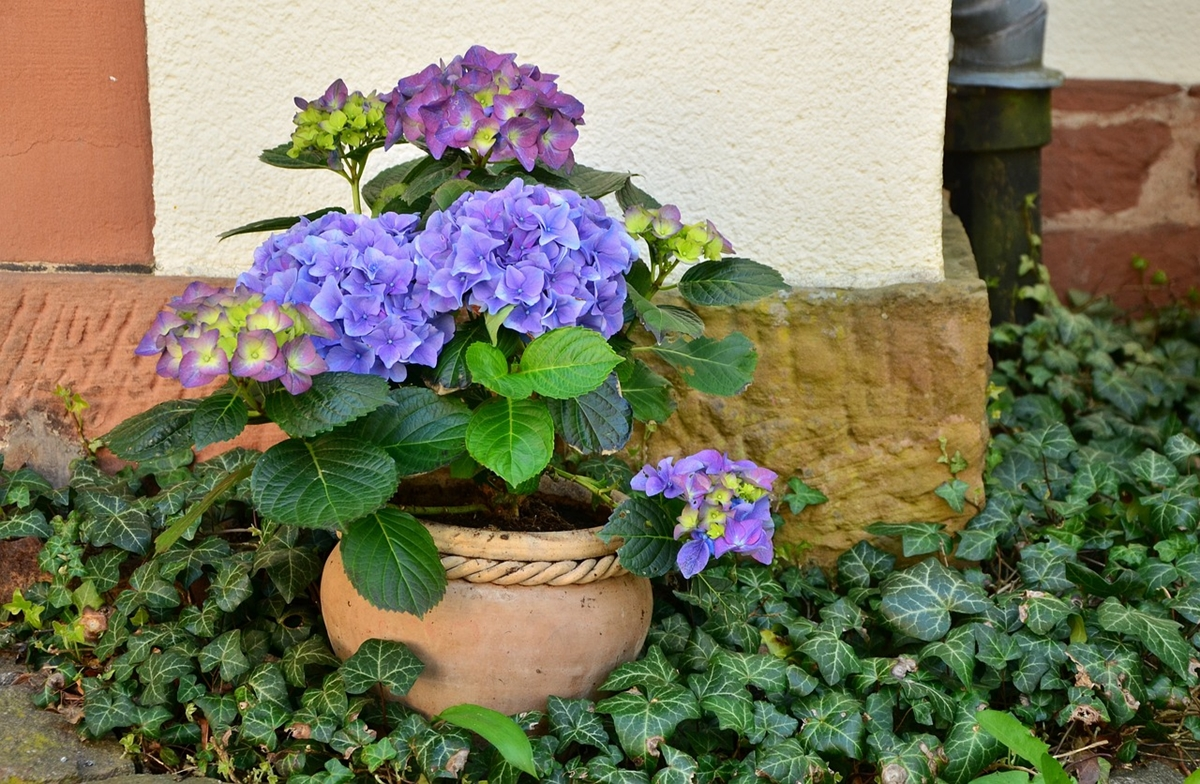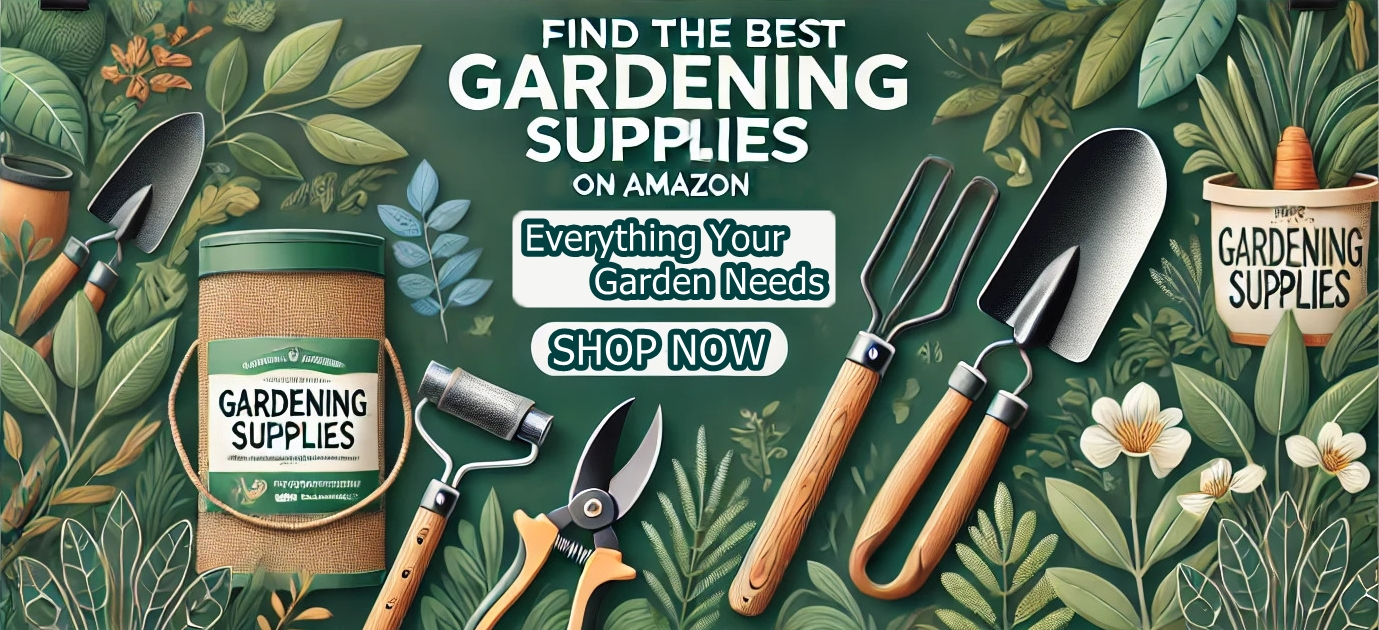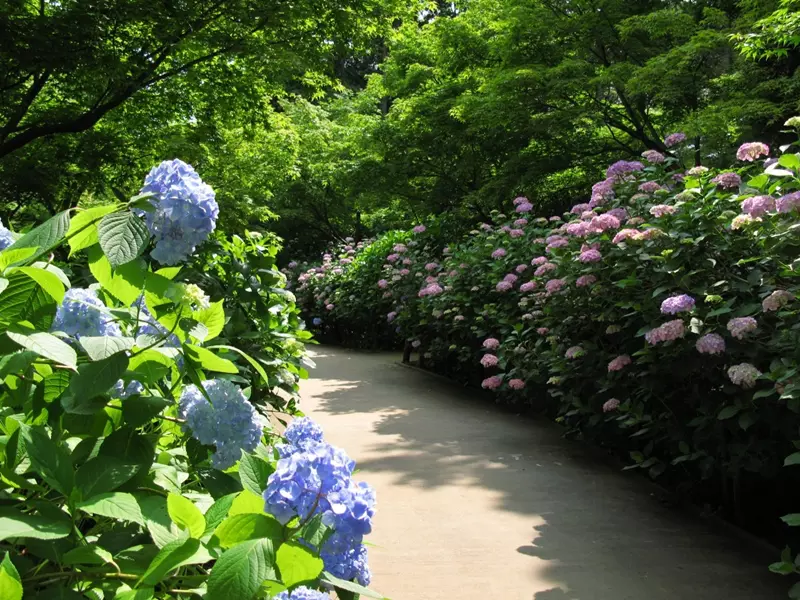
How to Grow Hydrangeas in Shaded Gardens
Discover how to grow hydrangeas in shaded gardens with our comprehensive guide. Learn about shade-tolerant varieties, planting tips, care, and common issues.
Read More💡 With the right care, even the smallest garden or balcony can burst with blooming hydrangeas — no compromise needed!
When I was a child, my grandmother gave me a small corner of her garden to look after. Encouraged and excited, I planted anything I could get my hands on - flowers, herbs, even the odd vegetable. Before long, I’d outgrown my tiny plot, not in size, but in ambition. I remember kneeling on the path, sketching ideas in the soil with a stick, trying to work out how I could squeeze in just *one more* plant without crowding the rest.
That childhood fascination with making the most of small spaces has stayed with me ever since. And if you're anything like I was - keen to fill every inch with colour and life - then compact hydrangeas are your best friend. In this article, we’ll explore the very best hydrangea varieties for small gardens and containers, so you can enjoy stunning blooms even if space is at a premium.

Hydrangeas have long been a staple in British and American gardens, and for good reason. Their ability to produce abundant, showy blooms over a long season - often from late spring well into autumn - makes them a firm favourite among gardeners. But beyond their visual impact, hydrangeas offer a surprising level of versatility, especially for those working with limited space.
In small gardens, every plant must earn its place. Hydrangeas for small spaces do just that. Modern breeding has introduced a wide range of compact and dwarf varieties, specifically developed to retain all the charm and flowering power of their full-size counterparts, while staying manageable in size. Many of these varieties grow no taller than 60–100 cm, making them perfect for patios, balconies, narrow borders, and even large containers.
One of the key advantages of hydrangeas in small gardens is their multi-seasonal appeal. Their large, dramatic flowerheads often shift in colour as they age, extending their visual interest. For instance, some mophead and lacecap types begin in vivid blue or pink, then mature into mauve or soft green tones - providing a dynamic, ever-changing focal point even in the tiniest of plots.
Another point in their favour is how adaptable hydrangeas are to different light conditions. While many flowering shrubs demand full sun, several hydrangea species such as Hydrangea macrophylla and Hydrangea serrata perform beautifully in part shade or dappled light - ideal for urban courtyards or gardens with neighbouring buildings and fences.
For those who enjoy creating curated outdoor spaces, hydrangeas also offer excellent design flexibility. Compact cultivars can be used as feature plants in pots, as low hedging along paths, or to soften hard lines near fences and walls. Their bold blooms pair well with finer textures like ferns and ornamental grasses, and their upright, bushy growth habit creates natural structure in any garden layout.
Let’s not forget the joy of colour manipulation in small-space gardening. Few plants offer the same responsiveness to soil pH as hydrangeas - particularly macrophylla and serrata types. In containers or raised beds, where you have greater control over soil composition, it's entirely possible to fine-tune the colour of your blooms, producing striking blues in acidic soil, or rich pinks in alkaline conditions.
Maintenance is another critical factor when choosing plants for a small garden. Hydrangeas are relatively low-maintenance shrubs, requiring little more than consistent watering, occasional feeding, and species-appropriate pruning. Many modern varieties are bred with stronger stems and improved disease resistance, making them less prone to flopping or mildew - common issues in more traditional types.
Finally, hydrangeas are beloved not only by gardeners, but also by wildlife. Their large flowerheads attract pollinators such as bees and butterflies, especially lacecap and panicle types, which offer easier access to nectar. So, even in a compact urban garden, planting hydrangeas helps support local biodiversity.
All things considered, hydrangeas tick nearly every box for small-space gardening: beauty, adaptability, seasonal interest, and ease of care. Whether you’re planting in a pot, along a narrow border, or creating a miniature cottage-style retreat, compact hydrangeas for small gardens provide impact without overwhelming your space.

Growing hydrangeas in containers is a brilliant solution for those working with limited space, or simply wanting more flexibility in their garden layout. Whether you have a modest courtyard, a small urban patio, or even just a balcony, potted hydrangeas allow you to enjoy the beauty of these flowering shrubs without needing a large garden bed. Their adaptability makes them particularly valuable in modern garden design.
In my experience, this flexibility can be the difference between success and heartbreak. I once lost a beautiful Hydrangea serrata to a sudden frost because I hadn’t moved the pot closer to the house. I’d grown it for three years, and when it didn’t leaf out the following spring, I must admit - I felt genuinely gutted. Lesson learned: mobility is not just convenient, it’s essential.
Beyond the practical benefits, growing hydrangeas in containers offers something deeply satisfying: a sense of closeness. When you care for a plant that lives just outside your door - or even just beyond your kitchen window - you tend to notice more: the first bud, the subtle shift in colour, the soft hum of a bee passing through. For me, it’s a small but constant reminder of nature’s rhythm, right there on the patio... plus, it gives me an excuse to buy more beautiful pots than I probably need.
Choosing the right hydrangea for a small garden or container can make all the difference between a cluttered space and a beautifully balanced planting scheme. Fortunately, modern plant breeders have developed a wide range of compact hydrangea varieties that deliver full-sized beauty in a scaled-down form. Below are some of the best options available to UK and US gardeners seeking impact without overwhelming their limited outdoor space.
‘Little Blue’ is a charming mophead hydrangea that reaches just 60cm in height, making it a perfect choice for pots and raised beds. Despite its small stature, it produces full-sized flowerheads with rich colour saturation. In acidic soil, the blooms are a classic sky blue, while in alkaline conditions, they shift to soft pinks.
Its compact form makes it ideal for tight borders, balconies or patios, and its reliable flowering habit ensures consistent seasonal interest. It's also a great option for beginner gardeners due to its low maintenance needs.
Hardiness: RHS H5
Sun/Shade: Partial shade
A dwarf version of the renowned ‘Limelight’, ‘Little Lime’ offers all the drama of conical lime-to-rose blooms in a much more compact form. Growing to around 90cm tall and wide, this variety is perfect for containers and small garden beds where vertical structure is needed without crowding.
Its flowers emerge in fresh chartreuse-green tones in midsummer and mature to soft pinks as the season progresses. Unlike mophead hydrangeas, paniculatas like this one thrive in full sun, making them highly adaptable for exposed urban gardens or sunny patios.
Hardiness: RHS H5
Sun/Shade: Sun or light shade
Known for its delicate lacecap flowers, ‘Bluebird’ is a favourite among those seeking elegance in a smaller footprint. Growing up to 1 metre in height, it features flat-topped flowerheads with fertile blue or purple centres surrounded by frilly sterile florets. Its foliage is equally appealing - deep green in summer, often turning red or burgundy in autumn.
‘Bluebird’ is especially well-suited for containers because it prefers a slightly sheltered position with dappled light and even moisture - conditions easier to manage in pots. It's also more cold-hardy than many realise, making it a solid performer in temperate gardens.
Height: Up to 1m
Features: Tolerates colder climates well
‘Annabelle’ is a classic, but her dwarf cousin ‘Bella Anna’ brings the same eye-catching globes of white flowers in a more manageable size. Topping out at 60–90cm, this compact arborescens hydrangea is ideal for gardeners who love the big bloom look without sacrificing space.
It flowers reliably from June to September and tolerates partial shade well. Sturdy stems help support the large flowerheads, reducing the risk of flopping - a common issue in older varieties. It’s a brilliant choice for shady courtyards or north-facing patios where other flowering shrubs may struggle.
Height: 60–90cm
Flower Time: June to September
Winner of RHS Chelsea Flower Show’s Plant of the Year in 2014, ‘Miss Saori’ is a spectacular double-flowered mophead variety that stays compact and elegant. Its pristine white petals edged with deep pink create a two-toned effect that looks almost hand-painted.
Growing to just 90cm tall, ‘Miss Saori’ is ideal for containers where her unique colouring can be admired up close. This variety also boasts excellent mildew resistance, making it a dependable and disease-resistant option for small-space gardeners who want visual drama without fuss.
Height: 90cm
Special Note: Excellent mildew resistance
Each of these compact hydrangeas has something special to offer, whether it’s colour-changing blooms, unusual flower forms, or sheer resilience in tricky spots. By choosing the right variety for your space and growing conditions, you can enjoy hydrangeas in containers or small garden settings without compromise.
Caring for hydrangeas in containers requires a slightly different approach compared to those grown in the ground. While potted hydrangeas offer great flexibility and control, they also rely entirely on the gardener for water, nutrients and protection. With a few essential practices, however, you can keep your container-grown hydrangeas healthy, vigorous and full of blooms throughout the season.
With the right care and attention, hydrangeas in containers can thrive for many years and reward you with vibrant, long-lasting blooms. The key is consistency - hydration, feeding, pruning and protection must all be balanced. Once you understand your plant’s needs, container-grown hydrangeas can be one of the most satisfying and show-stopping additions to a small garden or patio.
Not all hydrangeas are suitable for containers, but many compact hydrangea varieties thrive in pots. Smaller cultivars like ‘Little Lime’ or ‘Miss Saori’ are ideal. Avoid vigorous types like the full-size ‘Limelight’ unless you have very large containers and sufficient space.
The flower colour of Hydrangea macrophylla and Hydrangea serrata depends on soil pH. Acidic soil (below pH 6) produces blue flowers, while alkaline soil (above pH 7) leads to pink blooms. You can adjust soil pH with additives like aluminium sulphate (for blue) or garden lime (for pink).
Slightly more, yes. Container hydrangeas dry out faster and have limited access to nutrients, so they require more frequent watering and feeding. However, their mobility makes them easier to manage in terms of sunlight, wind and winter protection.
Use ericaceous compost for acid-loving types like macrophylla and serrata. For others, a high-quality peat-free multi-purpose compost enriched with organic matter works well. Good drainage is essential, so consider adding perlite or grit.
Water regularly to keep the soil evenly moist, especially during dry spells. In hot weather, daily watering may be necessary. Always water deeply so the roots are thoroughly soaked, and avoid letting the compost dry out completely.
Yes. Apply a slow-release balanced fertiliser in spring, followed by occasional liquid feeds during the growing season. Container hydrangeas quickly deplete nutrients, so feeding is key to strong growth and vibrant blooms.
That depends on your climate and the pot size. In mild areas, many hydrangeas will survive outdoors with some protection. In colder regions, move pots to a sheltered spot or insulate them with fleece or bubble wrap to protect the roots from frost.
Yellowing leaves can indicate overwatering, poor drainage, or a lack of nutrients - especially iron. Check for soggy compost and ensure your container drains properly. Feed regularly with a fertiliser suitable for hydrangeas to avoid deficiencies.
Yes, but the method depends on the variety. Paniculata and arborescens types can be cut back in late winter to encourage bigger blooms. Macrophylla and serrata should be lightly pruned after flowering - mainly removing old flowerheads and dead wood.
Choose a pot at least 40cm wide and deep to allow room for root growth and good moisture retention. Ensure it has adequate drainage holes. Larger varieties will benefit from even more space.
Absolutely. Many compact hydrangeas thrive in containers on balconies, rooftops, or terraces. Choose sheltered spots with partial sun, and be mindful of wind exposure, which can dry out pots quickly or damage flowerheads.
Yes - especially lacecap and panicle types, which provide easier access to nectar. Bees and butterflies are commonly seen visiting these flowers, making them a great choice for wildlife-friendly small gardens.
With proper care, hydrangeas in pots can bloom from early summer to autumn. Deadheading spent flowers and maintaining good watering and feeding routines will help prolong the blooming period.
Over time, yes. If your hydrangea seems to dry out quickly or shows reduced growth, it may be root-bound. Repot into a slightly larger container every 2–3 years in early spring, refreshing the compost and loosening the roots.
Hydrangeas are outdoor plants and generally don’t thrive indoors for long periods. However, they can be brought into a cool, bright porch or conservatory for temporary display or winter protection, as long as they are not near central heating.

Discover how to grow hydrangeas in shaded gardens with our comprehensive guide. Learn about shade-tolerant varieties, planting tips, care, and common issues.
Read More
Explore the best hydrangea varieties for urban gardens in the UK, including their unique features and benefits for city environments.
Read More
Discover what to plant with hydrangeas to create a thriving and visually stunning garden. Learn about the best companion plants and their benefits.
Read More